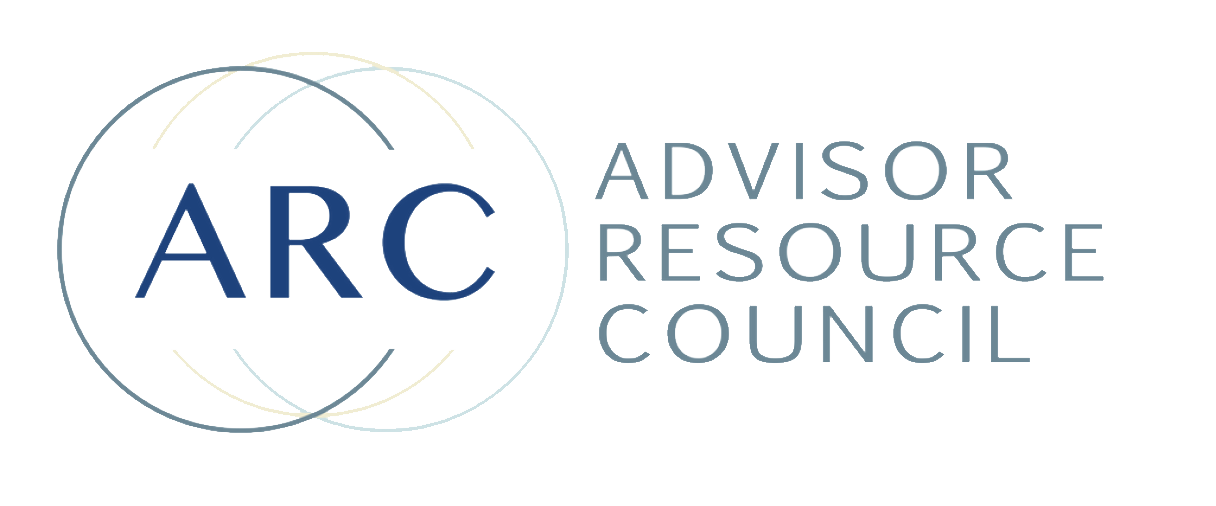GOING INDEPENDENT

The financial advisory industry has seen a tremendous evolution over the past few decades, driven by technological advancements and a changing work environment. This shift has empowered many advisors to design their business around their personal lives while maintaining—and even accelerating—the growth of their practices. One such advisor is Ashley Hodge, whose journey to becoming an independent financial advisor with a thriving practice is not only inspiring but serves as a testament to what’s possible for others considering the independent route. Finding the Path to Independence Ashley’s journey began in 1993 at Merrill Lynch, where he spent six years in Fort Worth, Texas, before moving to a small regional firm, JC Bradford, in 1999. A few acquisitions later, he found himself at UBS, which he left in 2004 to go independent. What’s unique about Ashley’s story is not just his transition to independence but the deliberate manner in which he prepared for it. “Back in 2001, I started experimenting with working from home. I knew that raising a family and maintaining a high quality of life would be a priority for me. I didn’t want to lose precious hours commuting or engaging in unnecessary office activities,” Ashley shared. Ashley’s decision to work from home—initially a rarity in the financial advisory world—was based on his desire to optimize his time and eliminate inefficiencies. Despite his early adoption of remote work, Ashley’s business continued to flourish, demonstrating that the traditional office environment is not a prerequisite for success. Overcoming Initial Challenges and Navigating Transitions Ashley’s transition to independence wasn’t without its challenges. His first move from Merrill Lynch to JC Bradford was met with legal hurdles and a messy arbitration case. This experience made Ashley more cautious and meticulous in planning his subsequent transition to an independent advisory firm. He ensured that his contracts and obligations were well understood and in compliance, enabling a smoother transition the second time around. “When I made the move to independence, it was about doing it right—no shortcuts,” Ashley explained. “I consulted with attorneys, did my homework, and made sure I had a solid plan in place before making the jump.” His preparation paid off. Despite a non-compete clause that limited his initial client base, Ashley successfully transitioned a portion of his clients and, over the next decade, grew his assets under management (AUM) from $25 million to over $100 million. Structuring a Business Around Values and Lifestyle One of the hallmarks of Ashley’s practice is its alignment with his personal values and lifestyle. Ashley has chosen to operate with minimal overhead, no full-time staff, and a unique fee structure that aims to cap his fees at $10,000 per client, regardless of asset size. This model has proven to be a strong differentiator, helping him attract high-net-worth clients while keeping his operational costs low. “For me, the focus was on providing value, being a good steward of my clients’ money, and keeping costs transparent and reasonable,” Ashley noted. “This strategy allowed me to stand out, especially when competing with larger firms that tend to charge more as assets increase.” Ashley’s adherence to his values doesn’t stop at fee structures. He integrates his faith and personal beliefs into his practice, offering advice on topics like biblical stewardship and living a generous life. However, he’s careful not to impose his views on clients who may not share the same values. “About 25% of my clients actively seek that type of advice,” Ashley shared. “For the other 75%, it’s more about trust, honesty, and financial stewardship. It’s important to be authentic and true to who you are without alienating others.” Working from Home: Turning a Challenge into a Strength Ashley’s decision to work from home initially raised some eyebrows in the industry. Yet, it’s been one of his greatest strengths. By building his home office with intentionality—soundproof walls, a private location within the house, and a disciplined approach to his workday—Ashley has managed to maintain productivity and professionalism. “Working from home was an adjustment, especially with young kids around,” Ashley recalled with a chuckle. “One time, my son walked into my office with a poopy diaper during a call with a prospective client. Fortunately, they ended up becoming a client, but I knew I had to create a more professional setup.” Now, with a dedicated office space designed to minimize distractions, Ashley has a routine that allows him to conduct three quality client reviews per day. This consistent engagement with clients has been instrumental in driving referrals and deepening relationships. Tools of the Trade and Staying Efficient In a world where technology can either simplify or complicate, Ashley has chosen tools that enhance his efficiency and support his paperless office. He relies on software like eMoney Advisor for budgeting and tracking, and MetroFax for secure communications. These tools enable him to run a streamlined operation without the need for additional staff. “I’ve found that having a truly paperless office has made it possible to operate efficiently from home,” Ashley said. “With technology like DocuSign and secure cloud storage, I can manage compliance requirements and client communications seamlessly.” Advice for Aspiring Independent Advisors For advisors considering the leap to independence, Ashley’s story offers a blueprint for success. He emphasizes the importance of planning, understanding one’s values, and designing a business that supports the life you want to live. “Do what you love, and the money will follow,” Ashley advised. “Surround yourself with quality people, and don’t be afraid to build your business around what’s important to you. Independence isn’t just about being free from corporate constraints—it’s about creating a practice that aligns with your life and values.” Ashley’s experience is a reminder that independence doesn’t mean sacrificing success. It’s about creating the freedom to run your business on your own terms. By eliminating distractions and focusing on delivering value, Ashley has built a thriving advisory practice from his home office, proving that success is achievable in any setting. Conclusion Ashley Hodge’s story is a powerful testament to the opportunities available for independent advisors who are willing to think outside the traditional office model. By focusing on what truly matters—serving clients, maintaining values, and optimizing time—Ashley has built a successful practice that serves as an inspiration to others. If you’re contemplating a move to independence or simply want to reimagine how your business can better support your life, Ashley’s journey offers valuable insights and encouragement. With intentional planning and a commitment to staying true to your principles, the possibilities for growth and fulfillment are limitless. Want to learn more or connect with Ashley? Visit his website at ashleyhodge.com .

Navigating the multifaceted landscape of running your own practice as an independent financial advisor presents a plethora of choices and challenges. This autonomy is undoubtedly one of the driving forces that leads advisors to take the leap into independence, yet it can also be an overwhelming endeavor. The allure of freedom is undeniable, but the question remains: how do you strike the delicate balance between self-sufficiency and seeking external assistance? Drawing upon my tenured experience in this field, I'd like to shed light on this matter. Identify Your Core Focus: At the heart of your practice lies a core value, a driving force that motivates you. Perhaps it's the art of crafting comprehensive financial plans that truly resonate with your clients. Alternatively, you might take pride in constructing diverse investment portfolios. It could be your mastery of patented software for client management or fostering a tightknit company culture. Whatever it is, it's imperative that this core focus aligns with your passion and expertise. Even more so, it should serve as a unique selling proposition that distinguishes your firm in a crowded marketplace. Delegate Wisely : Acknowledge that you can't be a master of everything. Certain tasks and services may not align with your passion or proficiency. Before deciding to outsource, evaluate the long-term impact of these tasks on your bottom line. If they are significant contributors, consider investing in training for yourself or your team. For instance, if administrative tasks related to investment services are not your forte, it's crucial to have a knowledgeable and skilled individual or team to handle them efficiently. This may involve training an employee or outsourcing to a specialized service provider. Conversely, if you recognize the need for a website to market your firm but lack the expertise, hiring a reputable marketing firm, especially one with industry-specific knowledge, is a prudent step. Vet Your Resources: With a clear understanding of what you should handle in-house and what should be outsourced, the next step is to choose credible resources. In today's fiercely competitive market, countless service providers vie for your business, a reality you're undoubtedly familiar with given your financial services background. However, this saturation often results in a glut of claims about being the best in the business, potentially compromising the quality and differentiation you seek. To mitigate this, it's imperative to thoroughly vet potential resources. Seek out partners with a track record of excellence and expertise specific to your needs. As an independent financial advisor, the choices you make in managing your practice will significantly impact your success. By identifying your core focus, delegating tasks judiciously, and carefully vetting external resources, you can strike a harmonious balance between self-sufficiency and seeking assistance. This approach will not only enhance your efficiency but also differentiate your firm in a competitive landscape, ultimately leading to greater success in serving your clients' financial needs.

Traditional client prospecting is a solid method that can yield an annual revenue increase of $5-10M. It's a straightforward and risk-averse strategy. But if you're looking to achieve a more ambitious scale, acquisitions could present an attractive alternative. An effective acquisition can immediately augment your assets under management (AUM) by roughly $30M, in addition to bringing in an average of 100 new clients. Before proceeding, it's crucial to address two pivotal questions: 1. Is Your Operational Infrastructure Ready for an Immediate Influx of New Clients? 2. How Are You Strategically Positioning Your Practice to Identify Acquisition Opportunities? Operational Readiness: A Core Requirement For any financial practice, regardless of its size, a resilient operational infrastructure is critical. This encompasses compliance, fund management, and client service. Each area needs streamlined processes to facilitate good practice and mitigate risk. Onboarding a handful of clients each week is manageable, but integrating 100 new clients within a short period requires robust preparedness. First impressions are singular events, and they need to be strategically managed. Navigating the Complexities of Account Transitioning Effective repapering—the process of transitioning accounts—is another crucial consideration. This involves revisiting account styles, compliance procedures, automated clearing house (ACH) transactions, and other pertinent details. Your tracking systems must be sufficiently rigorous to manage these complexities. Identifying Lucrative Acquisition Opportunities: A Proactive Strategy We often consult with network advisors who express interest in acquiring a book of business. Yet, when asked about their approach to identifying these opportunities, many do not have a coherent strategy. Strategic Measures to Identify Opportunities: 1. Hire a Specialized Recruiter : Utilize their expertise to find advisors open to selling their practice. 2. Direct Outreach to Industry Peers: Conduct cold calls or emails to understand their exit strategy and readiness to sell. 3. Attend Industry-Specific Events: Utilize conferences and educational seminars as platforms to discuss potential acquisitions with other advisors. 4. Leverage Professional Networks: Connect with peers who might be interested in a merger or acquisition. In short, waiting for an acquisition opportunity to present itself organically is not a viable strategy. Adopt a proactive approach, similar to the zeal applied in building your existing practice.







